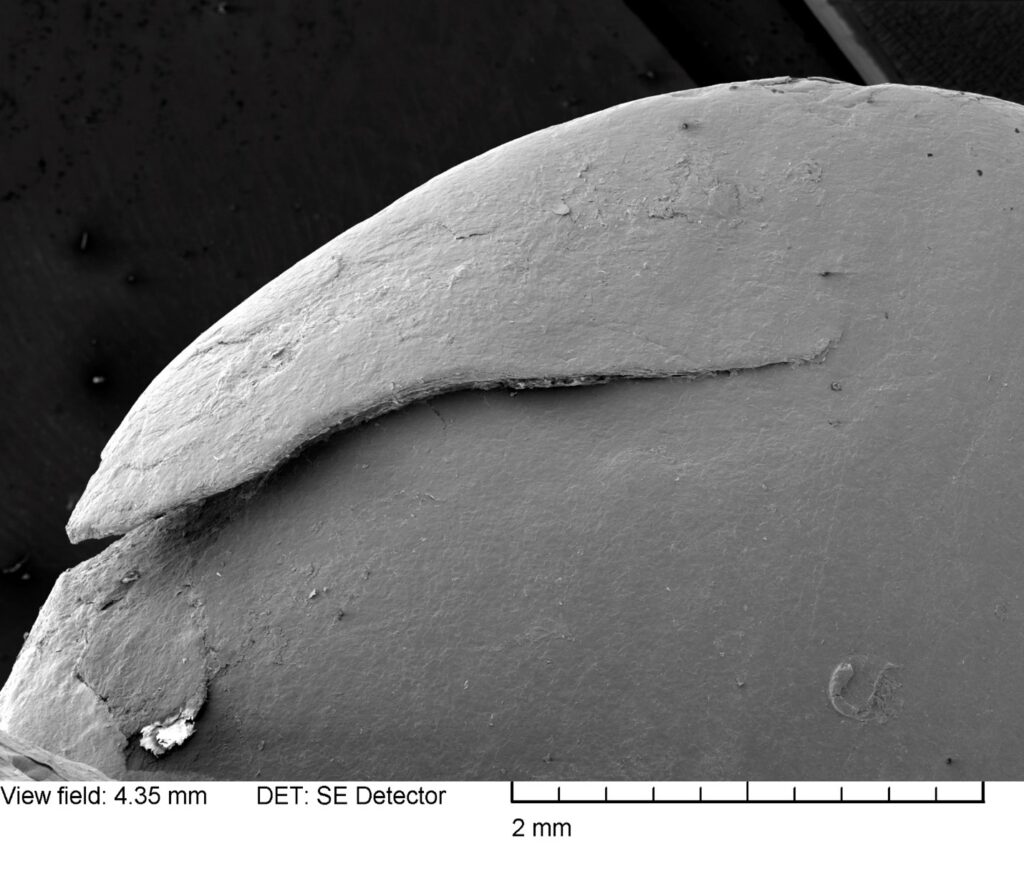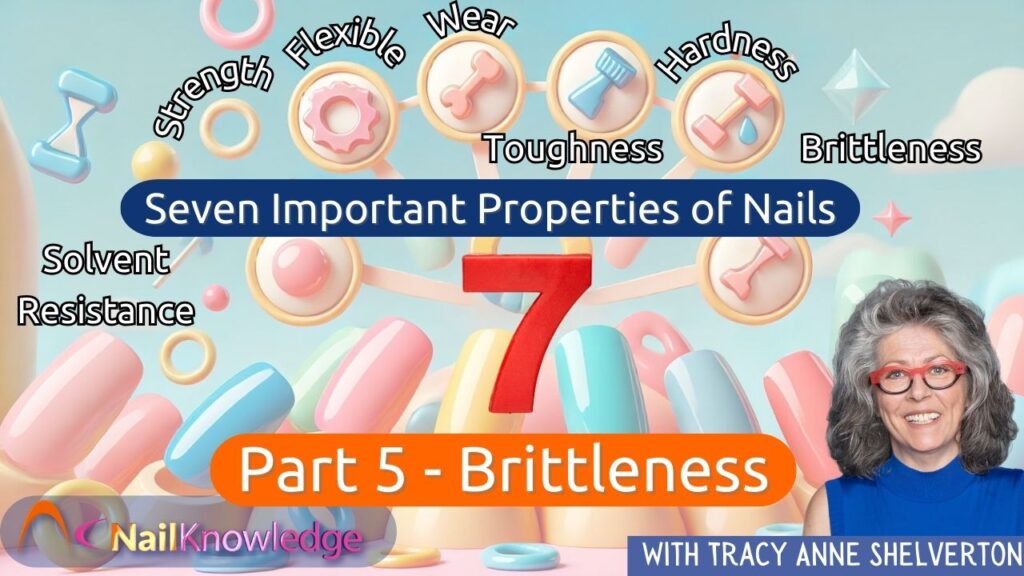In this fifth part of our series on the key properties of natural and artificial nails, we examine brittleness. We’ve previously covered strength, hardness, flexibility, and toughness, all of which play crucial roles in maintaining nail health. Brittleness, however, occurs when the balance between strength and flexibility is lost, causing nails to break easily, even under minimal stress or impact. Understanding brittleness is essential for both natural and artificial nail care, as it affects the durability and resilience of the nails over time.
What Is Brittleness and How Does It Affect Nails?
Brittleness occurs when a nail lacks flexibility and becomes prone to cracking or breaking without bending. A great comparison can be made with bones—children’s bones are flexible, but as we age, our bones lose flexibility and become brittle. The same happens to nails. When a nail is brittle, even a small impact or snag can cause it to break, crack, or shatter without much force. For example, clients might claim that their nail “just broke” while doing nothing; this could indicate that their nails have become brittle over time, so some small (unnoticeable) trauma was enough to break (brittle) the nail.

Brittleness can develop in artificial nails or nail coatings as well, though it typically takes a little time for this to become noticeable. This could be due to the specific formulation of the product used, or brittleness may result from improper curing. When brittle artificial nails break, it is often accompanied by a snapping sound, but when a nail coating breaks it usually quietly fractures and we don’t notice until we wash our hair or the nail coating snags on our clothing, this needs to be fixed as soon as possible to stop pathogens from nestling between the nail coating and the nail bed as water from simple things like washing our hands can be a starting point for the development of an infection because pathogens love warm cozy places and a few drops of water. This can be easily avoided with a quick removal and replacement of the damaged nail coating.
Nail Hardness and Brittleness: The Connection
Brittleness is closely tied to nail hardness, as a nail that becomes too hard and loses its flexibility will crack or shatter instead of bending. While nail hardness refers to a nail’s ability to resist surface damage like scratches, brittleness describes the nail’s tendency to break without bending. Nails that are too hard without enough flexibility will inevitably become brittle, resulting in a higher likelihood of damage. Artificial nail coatings, like hard UV gels, are sometimes brittle if they are too rigid and lack the necessary flexibility to bend with the natural nail.
The loss of flexibility is often the main culprit behind brittleness. When nails are no longer able to bend under pressure, they are more likely to fracture. This is why maintaining a balance between hardness and flexibility is key to preventing brittleness in both natural and artificial nails.
*** The natural nail under the gel is in continuous motion and if its brittle it will curl away from the nail coating at the free edge, that in combination with a brittle gel is a recipe for disaster. ***
Causes and Reversal of Brittleness
Several factors can contribute to nail brittleness, including age, diet, overall health, and environmental exposure to cleaning agents and solvents. Artificial nails can also become brittle over time, particularly if improper curing has occurred or if the product’s formulation doesn’t maintain the right balance of flexibility and strength.
Fortunately, there are ways to address and reverse brittleness. Since brittleness occurs due to a loss of flexibility, the best solution is to restore flexibility in the nail plate. High-quality nail oils or solvent treatments containing Allantoïne and or Ureum are highly effective in combating brittleness. These oils and natural moisturisers absorb into the nail plate, increasing its flexibility and restoring the balance between strength and flexibility. Good quality nail oils work similarly to leather conditioners, which soften and reduce brittleness in leather with the added ability to hold water at bay.
Good quality nail oils can penetrate both natural nails and most artificial nail coatings, except for some UV-cured coatings with surfaces that resist penetration hard gels are a good example of this. This is also true for solvents like acetone, which may struggle to penetrate these harder UV gel coatings, for this reason a hard gel cannot be soaked off of a natural nail.
Restoring Flexibility to Reduce Brittleness
To reverse brittleness, it is important to maintain flexibility in the nails. This can be done by regularly applying [TS1] good quality nail oils. These oils help restore the nails’ natural elasticity and help prevent further cracking or shattering. By focusing on flexibility, both natural and artificial nails can maintain their durability and appearance over time.
Explore More Key Properties of Nails in Our 7-Part Series:
- Nail Strength – Discover how the strength of nails impacts their performance and durability.
- Nail Hardness – Understand the crucial role of hardness in nail health and how to maintain the perfect balance.
- Nail Flexibility – Understand the importance of flexibility in preventing nail breakage and maintaining resilience.
- Nail Toughness – Find out what makes nails tough and how this property differs from strength and hardness.
- Nail Brittleness – Learn what causes brittleness in nails and how to prevent it.
- Nail Solvent Resistance – Explore how nails can resist damage from chemicals and solvents.
- Nail Wear – Understand the factors that affect how well nails withstand regular use and environmental exposure.
In summary, brittleness in nails can be a result of an imbalance between hardness and flexibility. By understanding how to restore flexibility through proper nail care and the use of high-quality nail oils, both natural and artificial nails can maintain their strength, flexibility, and overall health of the nail unit, ensuring the perfect harmony between the natural nail and our much loved artificial nails or coatings.


